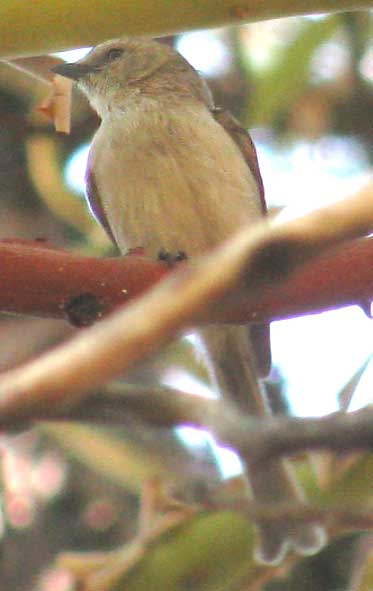Excerpts from Jim Conrad's
Naturalist Newsletter
from the August 2, 2009 Newsletter, issued from the Siskiyou Mountains west of Grants Pass, Oregon:
A CROWD OF BUSHTITS

At my campsite on a ridge populated with madrones, just as the heat was easing a bit, a crowd of Bushtits, PSALTRIPARUS MINIMUS, had briefly moved past my tent and a couple of birds had paused to look at me. One is shown at the right.
"Crowd" doesn't sound right for a gathering of birds but it's the best one I can think of to describe a bunch of foraging Bushtits. Nearly always Bushtits are seen drifting across the landscape in hyperactive, profoundly social groups of a dozen or more birds, foraging for spiders and small insects. The word "flock" is inadequate for evoking their nervous energy. "Swarm" almost gets it but that word implies a larger number. "Mob" implies a threat but there's nothing threatening about these teeny, plain-looking little birds so easily identified by their very long tails and very short beaks. Even with such lengthy tails the birds reach only 3½-inches long (9 cm), so they're much smaller than a chickadee. As they fly about orbiting one another they softly, plaintively keep in touch calling a high, thin, fussing tsit-tsit-tsit...
Bushtits are the only North American member of their family, the Long-tailed Tit Family, or Aegithalidae, the other twelve members of the family being Eurasian. Our Bushtits are also the only species in their genus Psaltriparus.
Bushtits are found in open woodlands, scrubby areas and even suburban shrubbery, from Vancouver, British Columbia south through much of the western US to Guatemala.